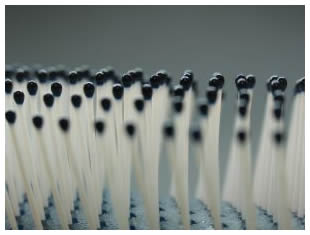 As noted in What is Obsessive-Compulsive Disorder? this condition in its most severe form is one of the most distressing conditions of all mental illnesses. OCD varies in severity, but in it most serious form, the suffer will usually also suffer from generalized anxiety disorder (an all-pervasive, yet unspecific fear), panic attacks, avoidance of certain places and situations, together with major depression.
As noted in What is Obsessive-Compulsive Disorder? this condition in its most severe form is one of the most distressing conditions of all mental illnesses. OCD varies in severity, but in it most serious form, the suffer will usually also suffer from generalized anxiety disorder (an all-pervasive, yet unspecific fear), panic attacks, avoidance of certain places and situations, together with major depression.
The “obsessive” part of OCD refers to the constant stream of intrusive thoughts and images which bombard the sufferer’s mind, which despite the best attempts by the sufferer, are almost impossible to eliminate. The “compulsive” component of the disorder is the actions used to help suppress the intrusive thoughts and images to provide relief from constant anguish. In our previous example featuring Kathleen, the repeated door rattling comprises the compulsive component of the disorder, and the thoughts that drive her to perform this act, the obsessive part.
Clinically, obsessions are defined as:
1. Recurrent and persistent thought or images, which are intrusive and inappropriate, and caused marked anxiety or distress.
2. The thoughts or images are not simply excessive worries about real-life problems, but are uncontrolled imaginings.
3. The person recognizes that the thoughts, images, and compulsions are a product of his or her own mind, i.e. they have an understanding that the thoughts are not grounded in fact.
4. The person attempts to ignore or suppress the unwanted thoughts, images, and impulses.
Compulsions are defined as:
1. Repetitive behaviors (e.g. handwashing, ordering objects, checking and rechecking) or mental acts (e.g. repetitive praying, counting, repeating words silently) that the person feels driven to do in response to an obsession, as listed above.
2. The behaviors or mental acts are aimed at preventing or reducing distress or preventing the occurrence of a perceived situation, such as a death or injury. However, these acts are not related or potentially useful in preventing the feared situation from happening. For example, kissing a person goodbye without fail or leaving the house will not prevent them being killed, yet the person believes that to omit the kissing ritual will result in possible harm.
The person with OCD recognized that their actions are excessive and unreasonable and not in accordance with the general population. This does not apply to children with the disorder.
The obsessions and compulsions cause distress and /or significantly interfere with the daily life of the sufferer, including their daily routine, social interaction, and job performance.
If you or a family member or friend suffer from OCD, treatment is available from therapists who specialize in OCD and other forms of anxiety disorders. With this particular disorder, recovery is seldom achievable without some form of medical intervention.
Contact Beth McHugh for further information or assistance regarding this issue.

